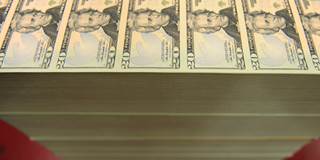The debate about so-called helicopter money is burdened by deep fears and unnecessary confusions: some worry that monetary finance is bound to produce hyperinflation; others argue that, in terms of increasing demand and inflation, it would be no more effective than current policies. Both cannot be right.
LONDON – Eight years after the 2008 crisis governments and central banks – despite a plethora of policies and approaches – have failed to stimulate enough demand to produce sustained and strong growth. In Japan, so-called Abenomics promised 2% inflation by 2015; instead, the Bank of Japan (BOJ) expects it to be close to zero in 2016, with GDP growth below 1%. Eurozone growth halved in the second quarter of 2016 and is dangerously dependent on external export demand. Even the US recovery seems tepid.

LONDON – Eight years after the 2008 crisis governments and central banks – despite a plethora of policies and approaches – have failed to stimulate enough demand to produce sustained and strong growth. In Japan, so-called Abenomics promised 2% inflation by 2015; instead, the Bank of Japan (BOJ) expects it to be close to zero in 2016, with GDP growth below 1%. Eurozone growth halved in the second quarter of 2016 and is dangerously dependent on external export demand. Even the US recovery seems tepid.